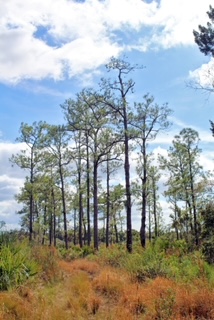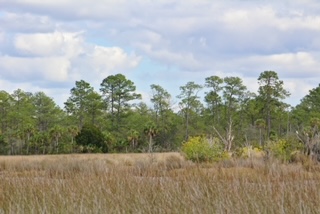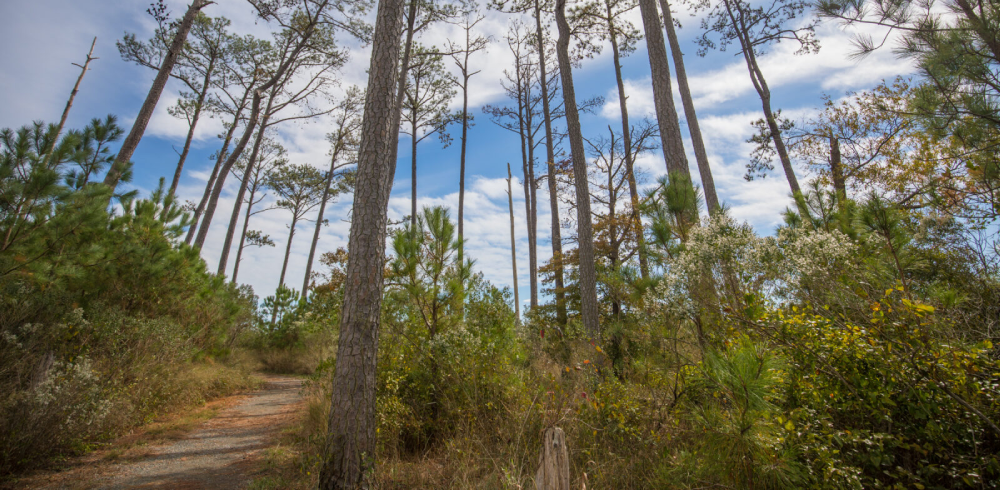Welcome back to the Marsh!
It’s a rainy winter’s day in the marsh and although there is life teeming around us, not much is active at the moment and many organisms are taking it easy until the spring. Today we are going to investigate a hammock out in the marsh. No, not the suspended bed used for camping or by the beach, but the small evergreen woodlands that are found in elevated places of brackish marshes.
Hammocks are fascinating ecological islands that emerge rather suddenly in the vast expanses of marsh grasses. Here, large woody plants such as loblolly pines, wax myrtles, and yaupon hollies have to tolerate an exposed and salty environment. This often leads to the plants growing interesting gnarled branches as they are pruned by salt spray carried by the wind.

This unique habitat acts as an interface between the dry upland woods and the wet marshes, leading to an interesting mix of wildlife. Downy woodpeckers and brown-headed nuthatches can often be seen and clamoring around the branches of tall loblolly pines, making their nests within the cavities of dead branches. Diamondback terrapins can be seen crawling out of the marshes to lay their eggs in the dry and sandy soil to incubate in the hot summer sun. Red-jointed fiddler crabs can be heard rustling through pine needles when the high tide floods their burrows and crafty raccoons will wash their meals in the water before eating in a sheltered bush.

Unfortunately, rising sea levels are flooding many of these hammocks, creating what scientists call “ghost forests.” Trees become too inundated with water or salt and ultimately die, leaving behind sun-bleached trunks as the marsh moves into what used to be high ground. Engaging in river-friendly practices, such as those outlined by our River Hero Homes program, can help create a brighter future for this increasingly harder to find habitat. Want to see some distinctive hammocks up close and in person? Make sure you have an access permit or fishing license and visit Ragged Island Wildlife Management Area in Isle of Wight County! You can hike down trails and boardwalks and see some of the best preserved salt marshes in the Lower James Watershed.

